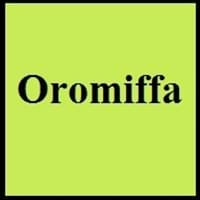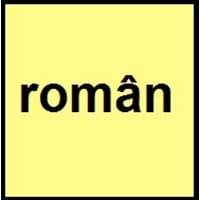Oromo and Romanian
Countries
Ethiopia, Kenya
European Union, Moldova, Romania, Serbia, Transnistria, Ukraine
National Language
Ethiopia
Moldova, Romania
Second Language
Not spoken in any of the countries
Kazakhstan, Russia
Speaking Continents
Africa
Asia, Europe
Minority Language
Somalia
Hungary, Serbia, Ukraine
Regulated By
Not Available
Academia de Ştiinţe a Moldovei, Institutul de Lingvisticǎ al Academiei Române (Institute for Li
Interesting Facts
- Oromo language is the third most spoken language in Africa.
- Oromo is most spoken language in Cushitic Family.
- Romanian language has distinct type of grammar and phonology compared to other Romance languages.
- The earliest text of Romance language was found in the year 1521.
Similar To
Somali Language
French, Spanish, Catalan, Portuguese and Italian Languages.
Derived From
Not Available
Latin
Alphabets in
Oromo-Alphabets.jpg#200
Romanian.jpg#200
Writing Direction
Not Available
Left-To-Right, Horizontal
Time Taken to Learn
Not Available
Thank You
Galatoomi
multumesc
How Are You?
Attam jirta/jirtu?
ce mai faci?
Good Night
Nagayattii buli
noapte Buna
Good Evening
Akkam waarite
buna Seara
Good Afternoon
Attam oolte / ooltan
buna Ziua
Good Morning
Attam bulte/bultan
bună Dimineața
Bye
Nagayattii!
La revedere
I Love You
Sin jaaladha
Te iubesc
Excuse Me
Maaloo na dabarsi
Scuza-Ma
Dialect 1
Borana
Aromanian
Where They Speak
Ethiopia, Kenya
Albania, Bulgaria, Greece, Republic of Macedonia, Romania, Serbia, Turkey
Dialect 2
Orma
Megleno-Romanian
Where They Speak
Kenya
Greece, Republic of Macedonia, Romania, Turkey
Dialect 3
Wata
Istro-Romanian
Where They Speak
Kenya
Croatia
Second Language Speakers
Not Available
Native Name
Afaan Oromo
Română
Alternative Names
Afaan Oromoo
Daco-Rumanian, Moldavian, Rumanian
French Name
galla
roumain; moldave
German Name
Galla-Sprache
Rumänisch
Pronunciation
Not Available
[roˈmɨnə]
Ethnicity
Oromos
Romanians
Language Family
Afro-Asiatic Family
Indo-European Family
Subgroup
Cushitic
Not Available
Branch
Not Available
Not Available
Early Forms
No early forms
Proto-Romanian
Standard Forms
Afaan Oromo
Romanian
Signed Forms
Not Available
Romanian Sign Language
Scope
Macrolanguage
Individual
ISO 639 6
Not Available
Not Available
Glottocode
nucl1736
roma1327
Linguasphere
No data available
51-AAD-c
Language Type
Living
Living
Language Linguistic Typology
Not Available
Not Available
Language Morphological Typology
Not Available
Synthetic
All Oromo and Romanian Dialects
Most languages have dialects where each dialect differ from other dialect with respect to grammar and vocabulary. Here you will get to know all Oromo and Romanian dialects. Various dialects of Oromo and Romanian language differ in their pronunciations and words. Dialects of Oromo are spoken in different Oromo Speaking Countries whereas Romanian Dialects are spoken in different Romanian speaking countries. Also the number of people speaking Oromo vs Romanian Dialects varies from few thousands to many millions. Some of the Oromo dialects include: Borana, Orma. Romanian dialects include: Aromanian , Megleno-Romanian. Also learn about dialects in South American Languages and North American Languages.
Oromo and Romanian Speaking population
Oromo and Romanian speaking population is one of the factors based on which Oromo and Romanian languages can be compared. The total count of Oromo and Romanian Speaking population in percentage is also given. The percentage of people speaking Oromo language is 0.36 % whereas the percentage of people speaking Romanian language is 0.37 %. When we compare the speaking population of any two languages we get to know which of two languages is more popular. Find more details about how many people speak Oromo and Romanian on Oromo vs Romanian where you will get native speakers, speaking population in percentage and native names.
Oromo and Romanian Language Codes
Oromo and Romanian language codes are used in those applications where using language names are tedious. Oromo and Romanian Language Codes include all the international language codes, glottocodes and linguasphere.





